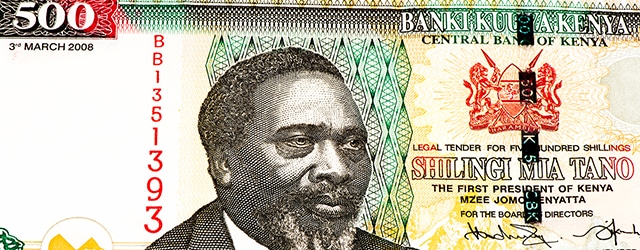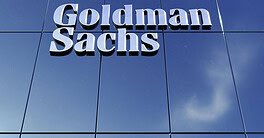Bank merger will create a major new player on the African banking scene.

Africa’s biggest bank by customer base will emerge in the third quarter of 2019 after a merger between the NIC Group (NIC) and Commercial Bank of Africa (CBA). The last regulatory hurdle to the merger was cleared today with the approval of theCentral Bank of Kenya and the Bank of Tanzania, a regional regulator.Kenya’s Capital Markets Authority and the Competition Authority of Kenya have also approved, allowing shares of the merged entity to commence trading on the Nairobi Securities Exchange on July 17.
The unified bank will employ 2,360 employees,serve40 million customers, and operate a network of more than 100 branches across two time zones in five regional economic centers including Nairobi (Kenya), Kampala (Uganda), Dar es Salaam (Tanzania), Kigali (Rwanda), and Abidjan (Senegal). With $4.5 billion in assets based on results for the year ended December 2018,the merged bank will become East Africa’s third-biggest lenderby assets and will have a book value of about $650 million. (KCB Group and Equity Group rank first and second with assets of $7 billion in assetsand $5.6 billion in assets, respectively.)
NIC has traditionally been strong in asset finance and has sought to expand its retail market presence with new branches and the launch of digital banking platforms while CBAhas been strong in corporate banking with the ability to issue large loans.
According global ratings agency Moody’s, the proposed merger will likely lead to higher profitability for the new entity due to staff and branch rationalization and reduced funding costs. In addition, the merged entity will be able to inject capital into strategic growth initiatives and execute digital expansion more efficiently courtesy of a strong capital basesays Moody’s. The merger—which Moody’s termed a credit positive for the two lenders—will also add to the small number of large, strong banks in Kenya’s overbanked sector.
“Despite integration costs in the first two years of the merger, cost synergies resulting from staff and branch rationalization and reduced funding costs from the stronger banking franchise have the potential to support profitability,” declared Moody’s.
However, Moody’s added: “This will depend, however, on the banks effectively managing the high integration risks stemming from eliminating numerous positions, retaining customers during the transition process, and merging their financial and operational systems and infrastructure.”
Global Credit Ratings (GCR), a South Africa-based ratings agency, expects the merger to drag earnings for up to three years.
CBA’s reported total capital to risk-weighted assets ratio was 17.4%at the end of 2017while NIC’s was 19.9%. The increased scale also will allow the entity to offer higher credit limits to corporate clients.
NIC’s Chairman James Ndegwa says the new bankwill have a new brand name to reflect the “identity, values and aspirations of the new merged entity.”
Areas of overlap including branch networks, technology, management and support functions are expected to be reviewed with a view to cut costs and improve efficiencies. Upon completion of the transaction, the businesses will be organized into banking and non-banking operations.The banking unit will comprise lending and deposit-taking businesses and includea company to house all the digital banking services including the micro-credit platform M-Shwari which is offered in Kenya.
The non-banking division will comprise stock brokerage, property investment, leasing, insurance agency and other ventures.
The two banks announced the planned deal in January. Current NIC Group shareholders will own 47% of the merged entity and CBA shareholders 53%, marking the first major merger in the sector since the government imposed a cap on commercial interest rates in 2016.
The cap pressured Kenyan banks to consolidate as it hit second-tier lenders’ ability to price risk, affecting the quality of loans and forcing lenders such as NIC to consider suitors, analysts said.
A court decided in March that the cap was unconstitutional but suspended the ruling for 12 months to allow parliament to re-examine the law.
The merger between NIC Group and CBA places them in a stronger position to confront the headwinds facing local banking since the commencement of restrictions on movement in lending rates in September 2016.
Kenya’s Treasury Secretary Henry Rotichsays Kenyan commercial banks should seek consolidation opportunities to strengthen and take advantage of business opportunities across the African continent:“The merger is very welcome. Kenyan banks will benefit from increased stability and will be stronger when they are bigger. This should help our banks to be able to take advantage of opportunities elsewhere in Africa.”
Increased bank consolidation in East Africa’s biggest economy has heightened an employment crisis in the sector that is already struggling with new regulations and investment in digital products.
Central Bank of Kenya (CBK) data shows that apart from sheddingjobs through bank failures, employee numbers in the remaining financiers have also been trimming their workforce to rein in high operating costs driven by the interest rate cap and digitization.
Collectively, banks have shed 6,020 employees in the three years prior to December 2017 with more cuts expected to be announced in CBK’s supervision report for 2018. With over 40 banks in the market, many financial sector analysts have for several years now said the sector is saturatedand that consolidation was the only way forward, especially for mid and lower tier lenders. Even for banks that are not considering merging, cost-savings programssuch as natural attrition and voluntary early retirement are becoming more common.
The merged CBA and NIC bank will count among its top owners some of Kenya’s most famous billionaire investors and political figures, shareholder information on the two lenders has revealed:Kenya’s President Uhuru Kenyatta, his brother Muhoho and their mother, former First Lady Mama Ngina Kenyatta, will together directly hold stakes worth a combined $84 million.
While the NIC Bank founded by Phillip Ndegwa, a former Governor of the Central Bank of Kenya (now deceased) with interests in shipping, real estate, insurance including farming bequeathed his family an equivalent of $84.7 million in the combined entity while another billionaire Kenyan businessman Naushad Merali with interests in manufacturing, farming, banking including holding a franchise in retailing and assembling motor vehicles will hold a stake worth about $18.7 million.
The Kenyattas—widely thought to be the riches family within the East and Central Africa region—will control about 13.2% of the new bank, a level of ownership that nearly matches the 13.25% equity that the Ndegwa family will have in the merged entity.
The Kenyattas currently hold a 24.9% stake in CBA while the Ndegwas have a 25 percent interest in NIC. Merali will end up with a 2.9% equity based on his present direct ownership of a 5.6% stake in CBA.
Besides the high-profile billionaires, CBA has other investors whose identity is cloaked in trusts and nominee accounts. Records from the Registrar of Companies reveal the underlying ownership of the privately-held CBA bank, whose investors control a combined 53% stake with a market capitalization of more than $642 million.
Livingstone Registrars, for instance, has a 24.65% interest in the private bank that will in turn entitle it to 13% equity worth $82.7 million in the merged entity. Officials of Livingstone Registrars said they are holding the shares on behalf of local investors whose identity they declined to disclose. Ropat Nominees and Ropat Trust Company also have a combined 27.88% interest in CBA that will translate into a 14.7% stake worth$94.6 millionin the merged entity.
Ropat’s directors are listed as Robert Kimani Ndung’u and Patrick Kamau Gacheru. Estimates of the effective ownership in the combined bank are based on the latest available shareholder lists of NIC and CBA banks and records from the Registrar of Companies.
CBA, while announcing the merger plans, disclosed that it had a total of 34 shareholders. However, it did not name them. Shareholders of CBA will get the larger stake in the combined business based on the relatively bigger size of the private bank and the value it brings to the table, including a larger asset base and millions of M-Shwari customers.



